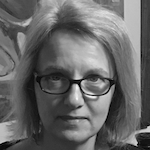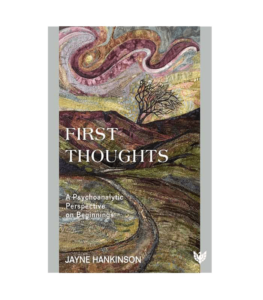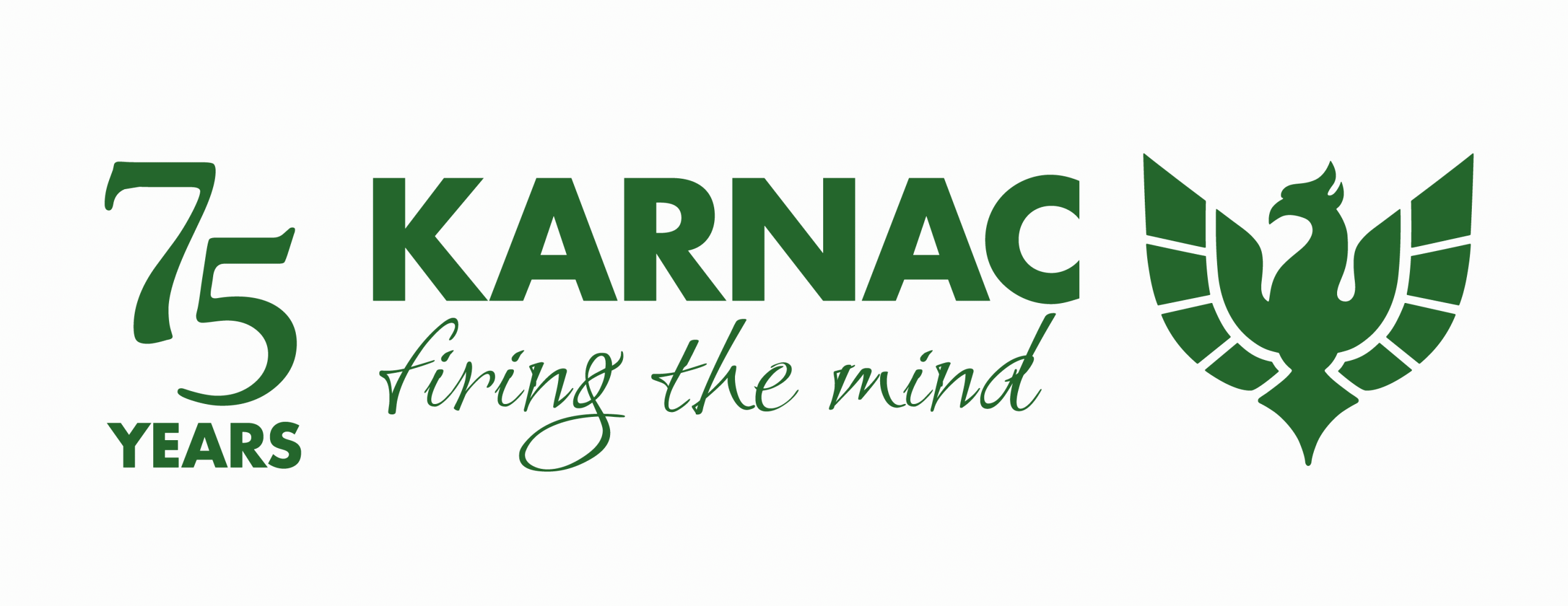
Jayne Hankinson is a member of the British Psychoanalytic Association and the International Psychoanalytical Association, and has been working in the field of psychoanalysis for almost ten years. Prior to her training, she was a psychodynamic counsellor, and has been engaged in either training or post-qualification counselling and psychoanalysis for about twenty years. During this time she has worked in a variety of counselling agencies, and has also spent two years at an NHS psychotherapy and psychiatric unit. Presently, she has a private psychoanalytic practice, and works as a supervisor, near High Wycombe in Buckinghamshire.
Here she takes us back to a childhood memory that plays a pivotal part in her stunning debut, First Thoughts: A Psychoanalytic Perspective on Beginnings.
I am eight years old and I’m with a friend and her father travelling out of the estate we live in. We are with him whilst he goes to a site situated along a country lane a couple of miles away. I can’t remember why he needs to go there, or why he has an association with this site, but I do remember I feel excited. We are sat in the back of his old car and, as we pull up, I look out of the window and see a large (to me at that age) area of derelict and collapsed buildings. My friend’s father says we have half an hour and we jump out of the car and go exploring.
There are stone walls outlining the footprint of what once was a cottage and outbuildings, perhaps a smallholding, but now a roofless space housing only nettles, saplings and brambles. It is a warm, breezy summer’s day and our shorts and T-shirts offer us little protection from the vegetation and walls as we scramble about. A thought occurs to me: I realise that someone once lived here. I stand still as I try to imagine the buildings as they once were. I look around and I’m overcome with a sense of what once was and the past lives that the buildings once held. The world seems to stop and I’m alone in my mind with a profound sadness. I can hear, in the distance, my friend’s voice – I feel lost and a heaviness seems to root me to the spot within a room within a roofless fossil of a cottage. I hear my friend again, nearer this time, and I realise I need to move. I look around and have an overwhelming sense of love for this place, an urge to come back when I’m older to build a house for myself here, and I vow to do so. My friend appears and asks why I’m not moving. I look at her and feel shame about my thoughts. ‘No reason,’ I say, and we hear her father calling us. We make our way back to the car and he asks what we have been doing – my friend says it was just a bunch of boring old stones, and I nod agreement.
Throughout my book, I reference this scene in my childhood as saying something fundamental and important for me. Even though it was just a momentary interlude in a largely forgotten early childhood, it has perplexed me as to why I remember it so vividly. My book represents a returning to this scene, and my realisation of the need for me to find meaning or, essentially, to build a ‘house’ of my own.
Many others have felt a similar need to return to something in order to rebuild anew, notably T. S. Eliot in ‘Little Gidding’, an excerpt of which ends my book (the often quoted, ‘We shall not cease from exploration / And the end of all our exploring / Will be to arrive where we started / And know the place for the first time…’ ). This is rightfully considered to be not only a beautiful poem, but also a profoundly insightful statement of life. This process of unceasing exploration which might (or might not) end with the realisation of knowing something about the beginning for the first time is essentially the impetus and need that has driven the writing of this book.
The unceasing journey of exploration had, on many fronts (familial, professional, emotional, epistemological, belonging, curiosity …) set me on a path of searching for something that always felt available but just outside of my ability to actually grasp. If only I could find another book or psychoanalytic theory, I would find the answer to something I didn’t really even have the question for. To bring this exploration to an end implies the giving up of something, which inevitably triggers a deep despondency and sense of futility when it becomes apparent that the searching has not doused the urge to find ‘something’. Conversely, it also allows the potential to discover something else in the stillness: the co-ownership and awareness of something fundamental.
Anyone who ceases to explore and is able to stand still can discover and build their own beginnings. In those ruinous buildings at the age of eight, in standing still, I realised how broken my ‘house’ was, how deeply sad I felt, and how I needed to build anew. But in feeling deep shame about this, I returned to my active exploration, effectively trying to find someone else’s house to live in. Through this book, I have now been able to build my own house and while I may not have unearthed definitive answers, nonetheless, it represents a process of discovery for me that we all have a deep need to engage in. I hope that any reader will similarly stand still, wonder about their own ‘house’ and beginnings, and be able to use their minds and inner resonance to construct a meaning relevant to them.
Jayne Hankinson

